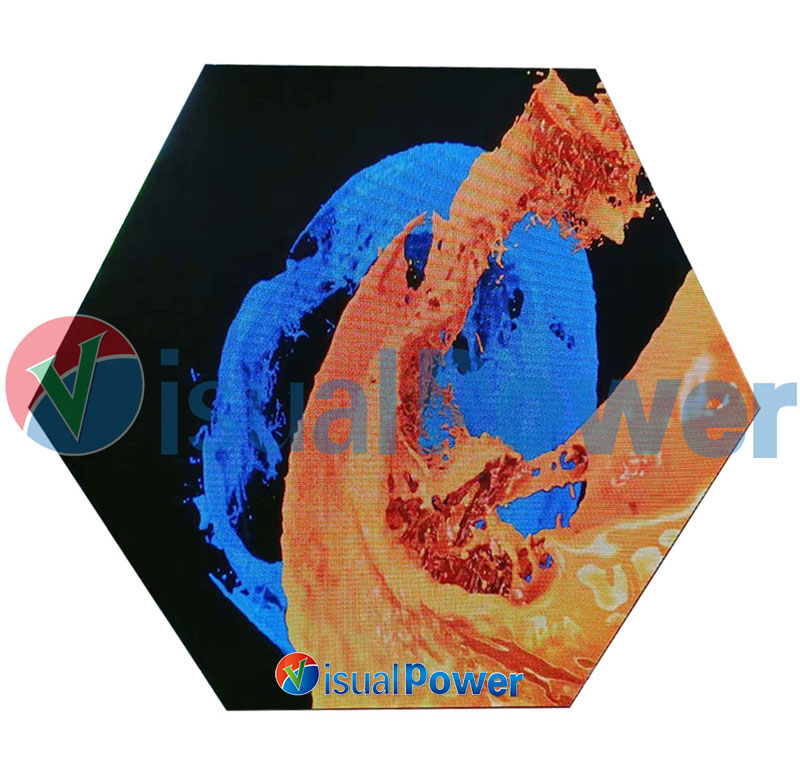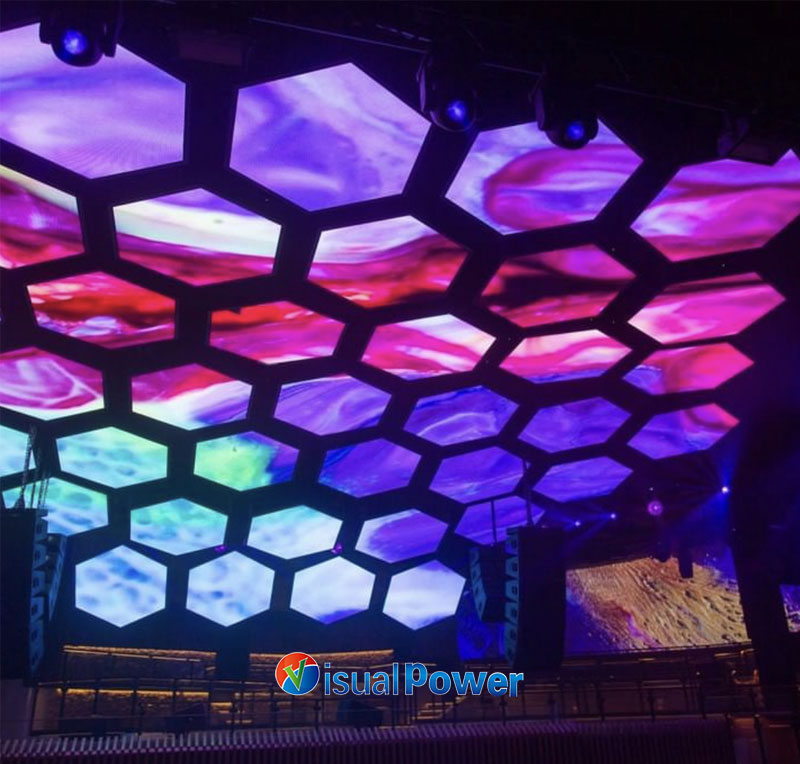Kategorien
- News (81)
- Fallstudie (6)
– My real confrontation with Hexagon LED-Anzeige screens on the spot
I’m actually not an avant-garde designer, but I do have a bit of a “visual cleanliness obsession”. I can tell at a glance whether a space is seriously saying “its own words”. Also, when I first stood in front of that hexagonal LED installation in an exhibition area of an art and technology museum, I was stunned.
I’m wondering: Is this a display screen or part of the building? Or perhaps, is it simply the opening remarks of some kind of “spatial language”?

I’m engaged in spatial projects and deal with various walls, ceilings and display structures every day. Ehrlich gesagt, traditional rectangular screens have become hard to arouse any creative desire. Big, Hell und klar sind das dreiteilige Set geworden, das visuelle Müdigkeit verursacht.
Aber das Sechseck ist anders. Es besitzt natürlich die Schönheit von “Asymmetrie”, sowohl ordentlich als auch leicht chaotisch sein. Wenn diese geometrische Sprache mit LED -Modulen kombiniert wird, Die Spannung ist wirklich unwiderstehlich.
Ich erinnere mich in einer visuellen Galerie einer Technologiemarke, Wir haben sieben Gruppen hexagonaler LED -Module verwendet, in einem kreisförmigen und zentripetalen Muster angeordnet, um eine Struktur zu bilden, die einer Wabe ähnlich ist. It’s not the kind of staged photos that look good, but rather the one that truly “pierces through” the visual center of the space. It is at that moment that you realize that “Anzeige” is not merely about playing videos; it is more like “sculpting information”.
When many customers hear me mention Hexagon LED Display, their first reaction is always: “Oh, is it made in the honeycomb type?” Every time I could only smile and say, “No, it’s made into grammar.”
What does it mean?
Der traditionelle Bildschirm ist wie eine Periode: Es endet, wenn du fertig bist zu beobachten. Jedoch, Die hexagonale LED -Spleißstruktur ist offen, und es kann selbst auf mehr Möglichkeiten hinweisen. Sie können nach links erstrecken, nach rechts falten, sich in der Ecke ausbreiten, oder bis zur Decke klettern – Sie entwerfen den Inhalt nicht, aber das grammatikalische System aufbauen.
Sobald wir an einem Unternehmenskulturmuseum gearbeitet haben, mit sechseckigen Bildschirmen zum Erstellen von a “Zeitreise -Tunnel”, mit jedem Bildschirm, der ein historisches Segment einer Marke darstellt. When the audience moves through it, the screen will automatically start the content playback according to the position sensing. That immersive feeling of “stepping into memory” is something that a straight screen can never offer.

Although these hexagonal LED devices are shining brightly on the spot, the process of implementing the technology is actually a complete mess. Seam routing, module load, arc surface splicing, signal synchronization, ventilation and heat dissipation… Each one is a test.
Especially when you are doing large-scale splicing, you need to take into account the changes in the audience’s perspective, the unity of near and far vision, the color differences between modules, and the transition logic of content rendering… Einmal, I even argued with the technical team until three o ‘clock in the morning over a gap at a 90° corner.
But it was also on that occasion that I experienced for the first time what is called “true creativity”. It’s never about how stunning the idea is, but rather whether you can build the framework for it, lay the cables and draw the logic diagram well. Ehrlich gesagt, this process is a bit like building a “living machine”.
At first, I also thought that hexagonal leds might only be suitable for high-budget art galleries and technology exhibitions. Später, I found out that it wasn’t.
Heutzutage, many brand window displays have begun to try to stack hexagonal screens with small modules to create a foreground structure. Some children’s education venues simply install the screens in the low areas that children can reach, and the content will respond according to the children’s touches. I even saw in the airport waiting hall an information island composed of hexagonal screen blocks, which carouted weather, boarding information and cultural short films. Surprisingly, it was very nice.
Its application logic is very simple: more flexible than rectangles, more stable than circles, and easier to control costs than irregular shapes – achieving a “non-coercive balance” between structural aesthetics and information expression.

You know, I’ve been in this industry for over a decade and have long been immune to “black technology”. What really moves me now is not how high the resolution is, nor whether it can be naked-eye 3D or not.
What I care about is whether this screen has “invited people in”.
Hexagon LED display is not merely “breaking the border”, but rather an invitation. Es lädt die Menschen ein, in den Inhalt einzusteigen, und lädt auch den Raum ein, sich auszudrücken. Jedes Mal, wenn wir es verwenden, um ein Projekt abzuschließen, Ich habe das Gefühl, dass ich nicht mehr nur ein bin “Content Transporter”, Aber wie a “Strukturchoreograf”.
Das könnte mich am meisten davon anziehen.